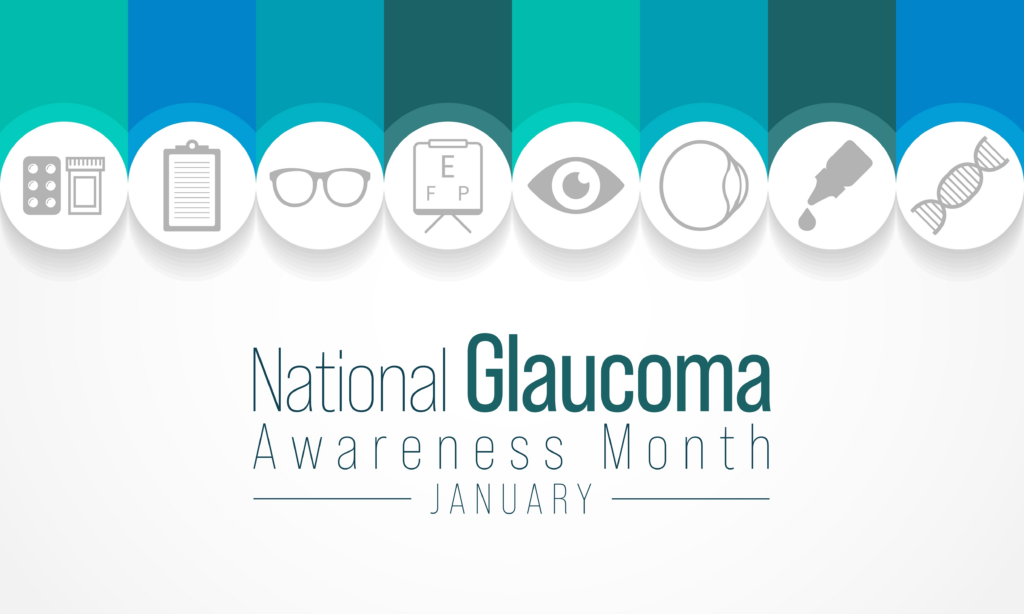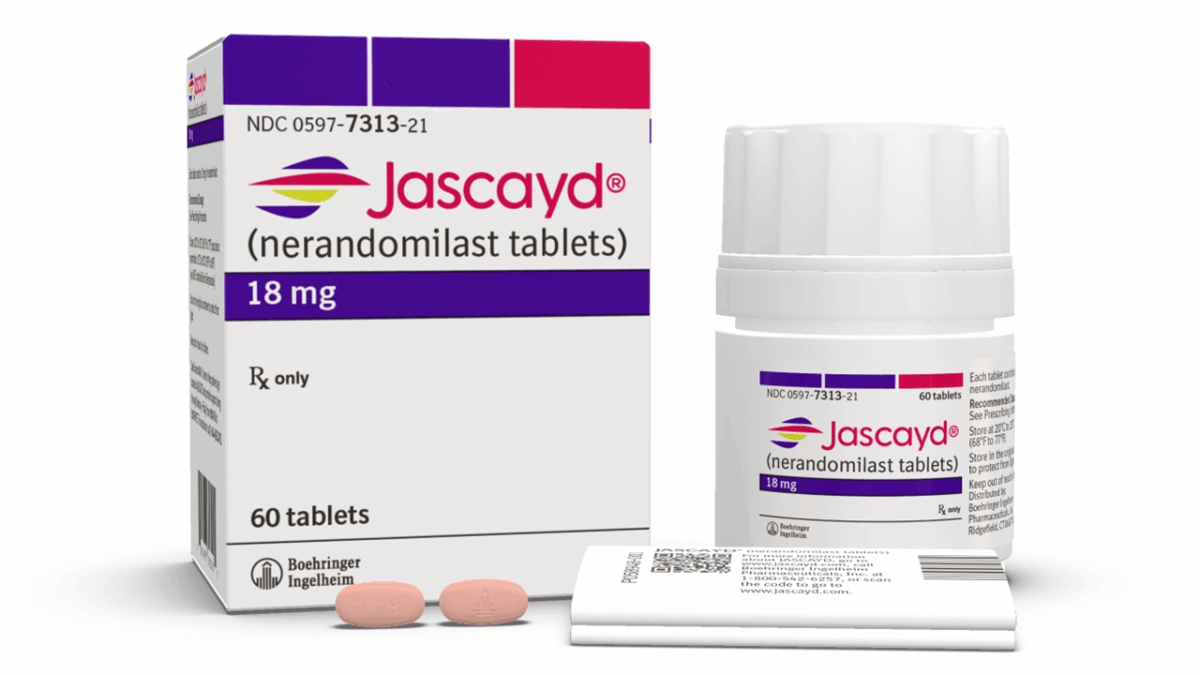January marks Glaucoma Awareness Month. Currently, more than 3 million individuals in the US are affected by glaucoma. The National Eye Institute predicts a 58 percent increase, with the number expected to reach 4.2 million by 2030. As part of Glaucoma Awareness Month 2024, the American Academy of Ophthalmology emphasizes the significance of regular, comprehensive eye examinations as the primary defense against glaucoma-related blindness.
Glaucoma is a condition that damages the optic nerve within the eye, usually caused by the buildup of fluid in the front part of the eye. This excess fluid leads to elevated intraocular pressure (IOP), which in turn causes harm to the optic nerve.
While most cases of glaucoma are associated with fluid accumulation in the front of the eye, some individuals can develop glaucoma even with normal eye pressure. When left untreated or improperly managed, glaucoma can lead to permanent and irreversible vision loss, ultimately resulting in blindness.
What Causes Glaucoma?
Glaucoma can manifest without a specific identifiable cause, but several factors may contribute to its development. The primary determining factor is IOP. Aqueous humor, a crucial fluid for nourishing the eyes, is produced by the eyes and circulates through the pupil to the front of the eye. In a healthy eye, this fluid exits through drainage canals located between the iris and cornea. However, in cases of glaucoma, there is increased resistance within these drainage canals. As a result, the fluid accumulates in the eye due to inefficient drainage, exerting pressure on the eye. Over time, this elevated eye pressure can lead to damage to the optic nerve, ultimately resulting in the development of glaucoma.
XTALKS WEBINAR: Addressing Ophthalmology Clinical Trial Design and Effective Data Monitoring Committee Strategies
Live and On-Demand: Thursday, February 8, 2024, at 1:30pm CET/EU-Central (7:30am EST)
Register for this free webinar to gain insights into statistical data strategies for ophthalmology clinical trials and learn best practices for establishing and reporting ophthalmic data.
How To Observe Glaucoma Awareness Month 2024
Celebrating Glaucoma Awareness Month is simpler than you might think. The most effective way to participate is by scheduling an eye examination with an optometrist to detect any potential signs of glaucoma.
Additionally, you can help raise awareness about glaucoma and the importance of regular eye check-ups among your family, friends and on social media. Sharing information about the significance of routine eye exams is essential.
Lastly, contributing to glaucoma research through donations to organizations or local hospitals is of great importance. By supporting research initiatives, you join scientists and healthcare professionals in their efforts to discover innovative treatments for glaucoma, playing a crucial role in advancing this field.
Some Investigational New Drugs in Clinical Trials for Glaucoma
Skye Bioscience is a pharma company dedicated to developing a synthetic cannabinoid derivative for glaucoma treatment. Recently, they received US Food and Drug Administration (FDA) approval to advance their Investigational New Drug (IND) application for SBI-100 Ophthalmic Emulsion (OE).
SBI-100 OE is a synthetic cannabinoid derivative that targets the CB1 receptor, crucial for managing IOP. It’s a groundbreaking, synthetically-derived molecule formulated as an eye drop using proprietary nanoemulsion technology to enhance eye delivery. This achievement now allows the company to start clinical trials in the US, including a Phase II study for primary open-angle glaucoma (OAG) or ocular hypertension (OHT), with data expected in early 2024.
Sepetaprost, being developed by the worldwide eye health organization Santen, is a promising investigational drug for glaucoma treatment, with several clinical studies highlighting its potential efficacy and safety. The Phase IIb ANGEL dose-finding study compared sepetaprost against a benchmark of 0.005 percent latanoprost over a 12-week period. It involved populations in the US and Japan suffering from either primary OAG or OHT. The study found that once-daily dosing of sepetaprost 0.002 percent was the most efficacious, resulting in a 7.0 mmHg reduction from baseline IOP at six weeks.
Aerpio Pharmaceuticals’ investigational drug razuprotafib, also known as AKB-9778, is being evaluated as a potential treatment for OAG and OHT. In a Phase II study, patients with OAG or OHT who had an unmedicated IOP between ≥22 mmHg to <36 mmHg were randomized to receive razuprotafib every day alongside latanoprost, a commonly used medication for glaucoma.
For patients receiving a combination of twice-daily razuprotafib and latanoprost, there was a statistically significant reduction in the diurnal mean IOP at Day 28 when compared to the baseline. However, the group receiving razuprotafib once daily did not exhibit a statistically significant change in IOP at Day 28.
Related: iDose TR Is a New Injectable Glaucoma Treatment Approved by FDA
Several New Treatments for Glaucoma
In 2023, Glaukos Corporation, a prominent company specializing in innovative treatments for glaucoma, corneal disorders and retinal diseases, achieved approval from the FDA for iDose TR (travoprost intracameral implant) 75 mcg, a prostaglandin analog designed for a single administration per eye. It is indicated for reducing IOP in patients OHT or OAG.
In 2022, the FDA granted approval for Omlonti (omidenepag isopropyl ophthalmic solution) 0.002 percent as an eye drop treatment aimed at lowering IOP in individuals diagnosed with OAG or OHT. This medication was developed through a collaboration between Santen and UBE Corporation, a chemical company based in Japan. As a relatively selective agonist of the prostaglandin E2 (EP2) receptor, Omlonti showcased IOP reductions between 5 mmHg to 7 mmHg across three different studies. For comparison, the timolol and latanoprost groups exhibited similar IOP reductions, ranging from 5 mmHg to 7 mmHg and 6 mmHg to 8 mm Hg, respectively.
Furthermore, in 2022, Thea Pharma’s Iyuzeh (latanoprost ophthalmic solution) 0.005 percent was granted FDA approval for IOP reduction. This prostaglandin analogue is prescribed to lower elevated IOP in individuals with OAG or OHT. In various randomized, controlled clinical trials, Iyuzeh effectively decreased IOP by 3 mmHg to 8 mmHg. This is compared to the 4 mmHg to 8 mmHg reduction observed with Xalatan (latanoprost ophthalmic solution) 0.005 percent, which includes benzalkonium chloride as a preservative. Notably, Iyuzeh distinguishes itself as the first and sole preservative-free version of latanoprost.
To have your company featured on Xtalks, please email Vera Kovacevic, PhD, at: [email protected]









Join or login to leave a comment
JOIN LOGIN